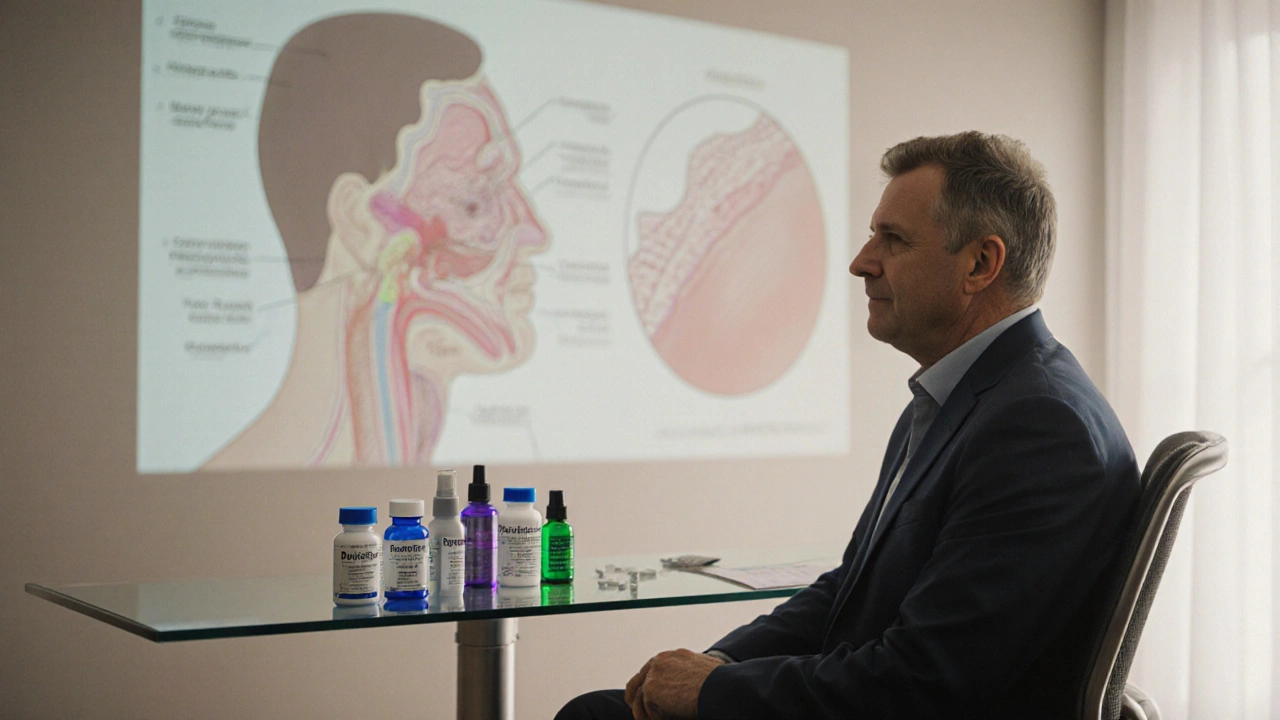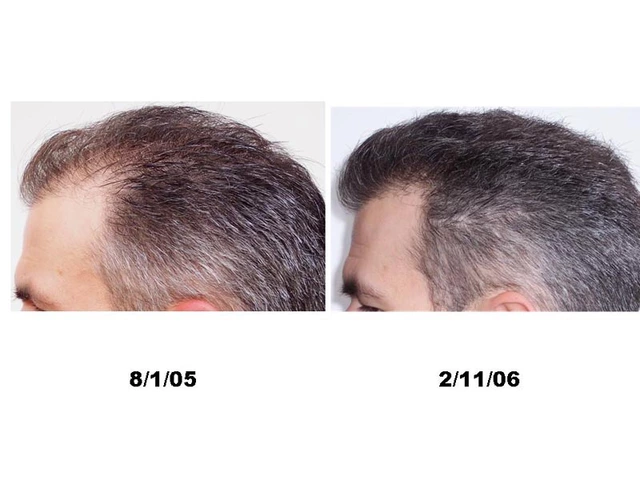Dutasteride Alternatives – Find Safer or More Accessible Options
When you hear about Dutasteride alternatives, the range of medicines, devices, or procedures that can replace dutasteride for treating male pattern baldness. Also known as dutasteride substitutes, they aim to lower dihydrotestosterone (DHT) or stimulate hair growth without the same dosage or side‑effect profile. Finasteride, a single‑enzyme 5‑alpha‑reductase inhibitor approved for mild‑to‑moderate hair loss is the most direct pharmacologic peer, while Minoxidil, a topical vasodilator that boosts follicle size and prolongs the growth phase offers a non‑systemic route. Low‑Level Laser Therapy (LLLT), a device‑based method that uses red light to improve cellular metabolism in scalp cells and Hair transplant surgery, the surgical relocation of healthy follicles to balding areas round out the most commonly mentioned alternatives. Together, these options cover the three main strategies: enzyme inhibition, follicle stimulation, and permanent restoration.
How the alternatives differ and when they fit
Choosing a dutasteride alternative requires understanding three key attributes: mechanism of action, dosage frequency, and side‑effect risk. Finasteride works by blocking the type II isoform of the 5‑alpha‑reductase enzyme, reducing DHT by roughly 70 %—enough for many men but less aggressive than dutasteride’s 90 % reduction of both type I and II isoforms. This makes finasteride a good fit for those who want a prescription pill with a well‑documented safety record. Minoxidil, on the other hand, doesn’t touch DHT at all; it expands blood vessels around hair follicles, increasing oxygen and nutrient delivery. Because it’s applied twice daily, compliance can be an issue, yet it avoids systemic hormone changes, which appeals to users worried about sexual side‑effects.
LLLT offers a drug‑free, low‑maintenance path: a few minutes a day with a comb or cap can boost mitochondrial activity, leading to thicker strands over months. Its main limitation is the need for consistent use and higher upfront cost, but there’s no systemic exposure. Finally, hair transplant surgery bypasses medication altogether, providing a permanent solution for stable‑grade loss. The trade‑off is surgical risk, recovery time, and expense. In practice, many patients combine these approaches—using minoxidil or LLLT to sustain existing hair while a transplant fills gaps.
Below you’ll find a curated list of articles that dig deeper into each alternative, compare costs, outline side‑effects, and give practical tips for choosing the right path. Whether you’re looking for a low‑cost over‑the‑counter option or a long‑term surgical fix, the posts ahead cover the most relevant information to help you make an informed decision.

A clear comparison of dutasteride (Dutanol) with finasteride, saw palmetto, minoxidil, and spironolactone, covering how they work, side effects, costs, and how to choose the right option.
Continue Reading




